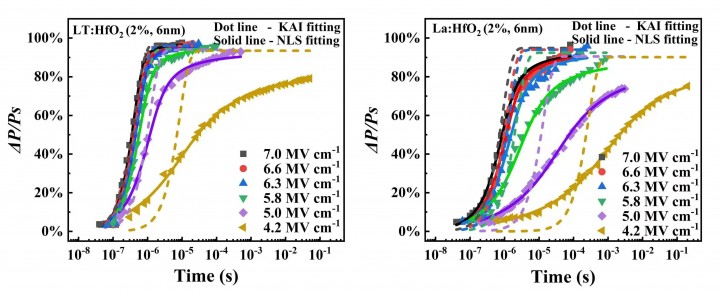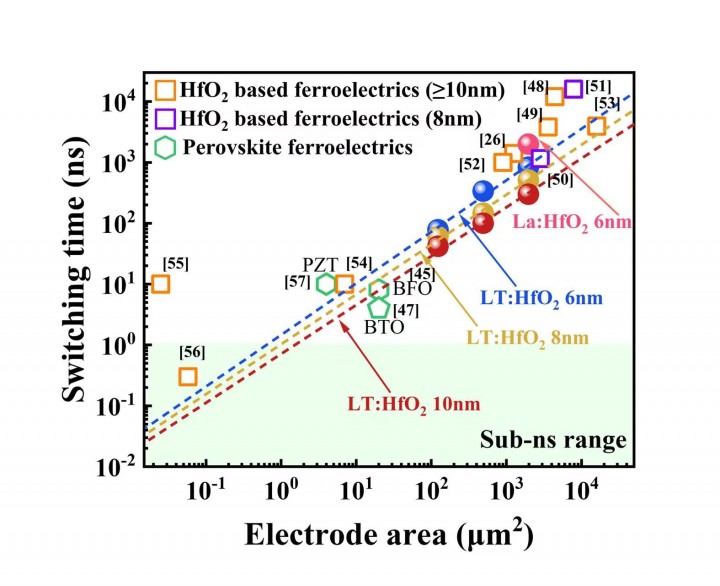The research team led by Professor Zuhuang Chen from School of Materials Science and Engineering at Harbin Institute of Technology (Shenzhen Campus) has achieved substantial advancements in the field of hafnium-based ferroelectric thin films. The research result entitled Enhanced Polarization Switching Characteristics of HfO2 Ultrathin Films via Acceptor-Donor Co-Doping were published in Nature Communications. The team innovatively applied the acceptor-donor co-doping modulation technique to the regulation of the polarization switching characteristics of hafnium-based ferroelectric devices, providing a new strategy to address the "double-edged sword" dilemma of oxygen vacancies in hafnium-based ferroelectric thin films. This work provides critical empirical and theoretical underpinnings for the progression of cutting-edge, high-performance ferroelectric memory devices.
The ferroelectric phase of HfO2 is metastable, and oxygen vacancies, the most prevalent defect type in HfO2, play a significant role in stabilizing this metastable ferroelectric phase. The discovery of ferroelectricity in HfO2 thin films, which are utilized as gate materials in MOSFET, has presented new opportunities for resolving ferroelectric storage challenges of CMOS compatibility and high-density integration. However, oxygen vacancies also exert adverse effects on device performance. In particular, the pinning effect of oxygen vacancies on ferroelectric domain walls leads to a reduction in the switching speed of HfO2-based ferroelectrics, placing HfO2-based ferroelectric storage at a disadvantage in terms of read and write speeds. Addressing the “double-edged sword” effect of oxygen vacancies is crucial for enhancing the polarization switching characteristics of HfO2 ferroelectrics, and it is key to achieving hafnium-based ferroelectric storage with both high polarization and rapid read and write capabilities
In response to the aforementioned issues, Professor Zuhuang Chen’s team pioneeringly applied a donor (Ta)-acceptor (La) co-doping method to modulate the properties of HfO2-based ferroelectrics. This method effectively stabilizes the polar phase of HfO2-based films while reducing the oxygen vacancy content within films simultaneously, contributing to the enhanced film quality. By means of this technique, HfO2-based ferroelectric devices exhibiting both high polarization and rapid switching characteristics have been achieved, with the switching time as low as sub-nanoseconds, comparable to perovskite-based ferroelectrics. Moreover, the high-quality of films and broadened energy plateau for metastable phase ensure the ferroelectricity at ultra-thin thicknesses, with the group demonstrating the stable ferroelectricity in co-doped HfO2 films as thin as 3 nm. The detrimental role of oxygen vacancies for the polarization switching is elucidated, and the mechanism by which the co-doping method reduces the switching energy barrier is also clarified. The proposed co-doping strategy is of significant importance in defect modulation of HfO2-based ferroelectrics, achieving reduced switching energy barriers, enhanced ferroelectric properties, and increased switching speeds. This provides effective guidance for accelerating the practical application of HfO2-based ferroelectric thin films in the low-power, fast, and non-volatile memory devices.


Paper Link: https://www.nature.com/articles/s41467-024-47194-8


